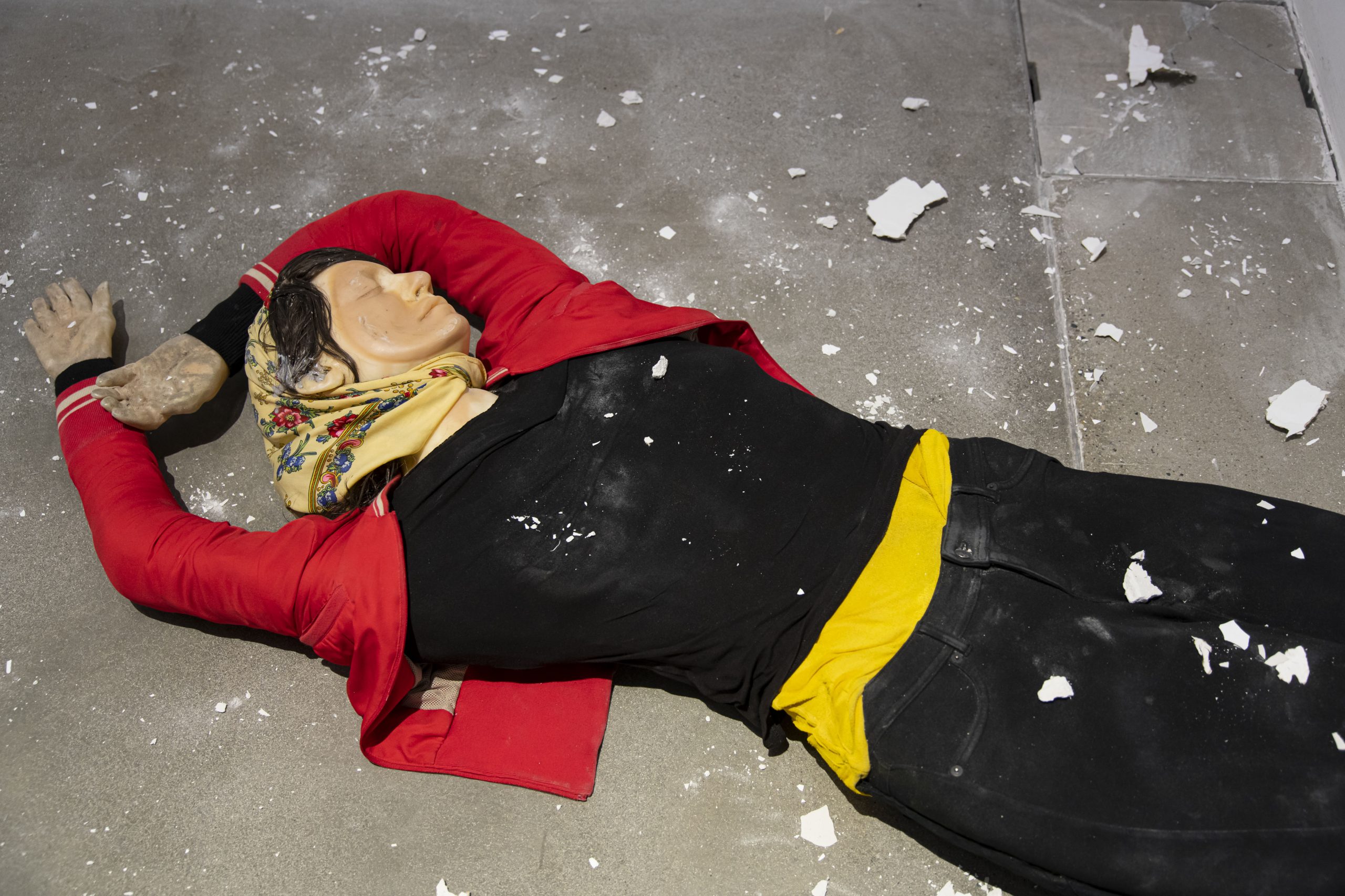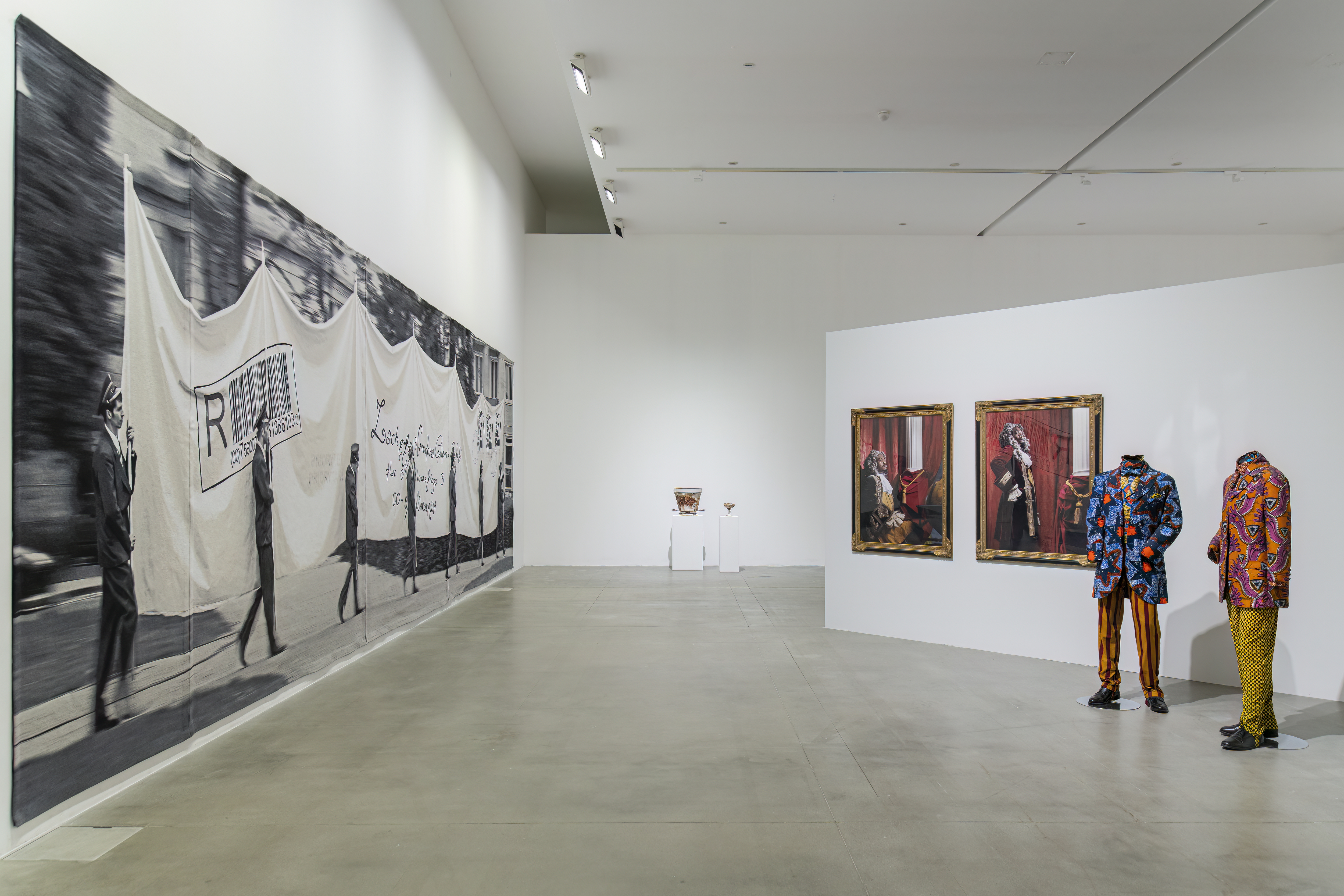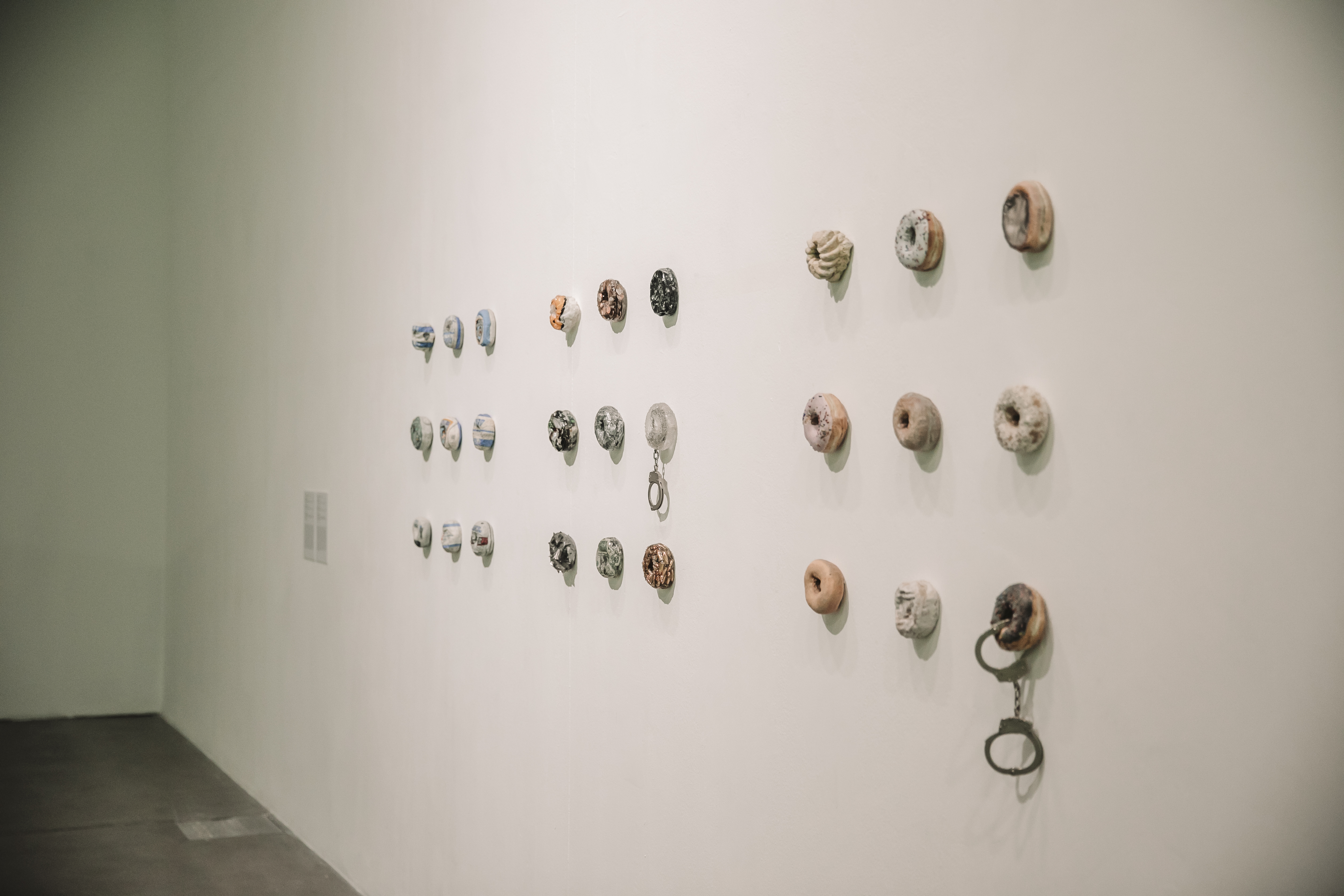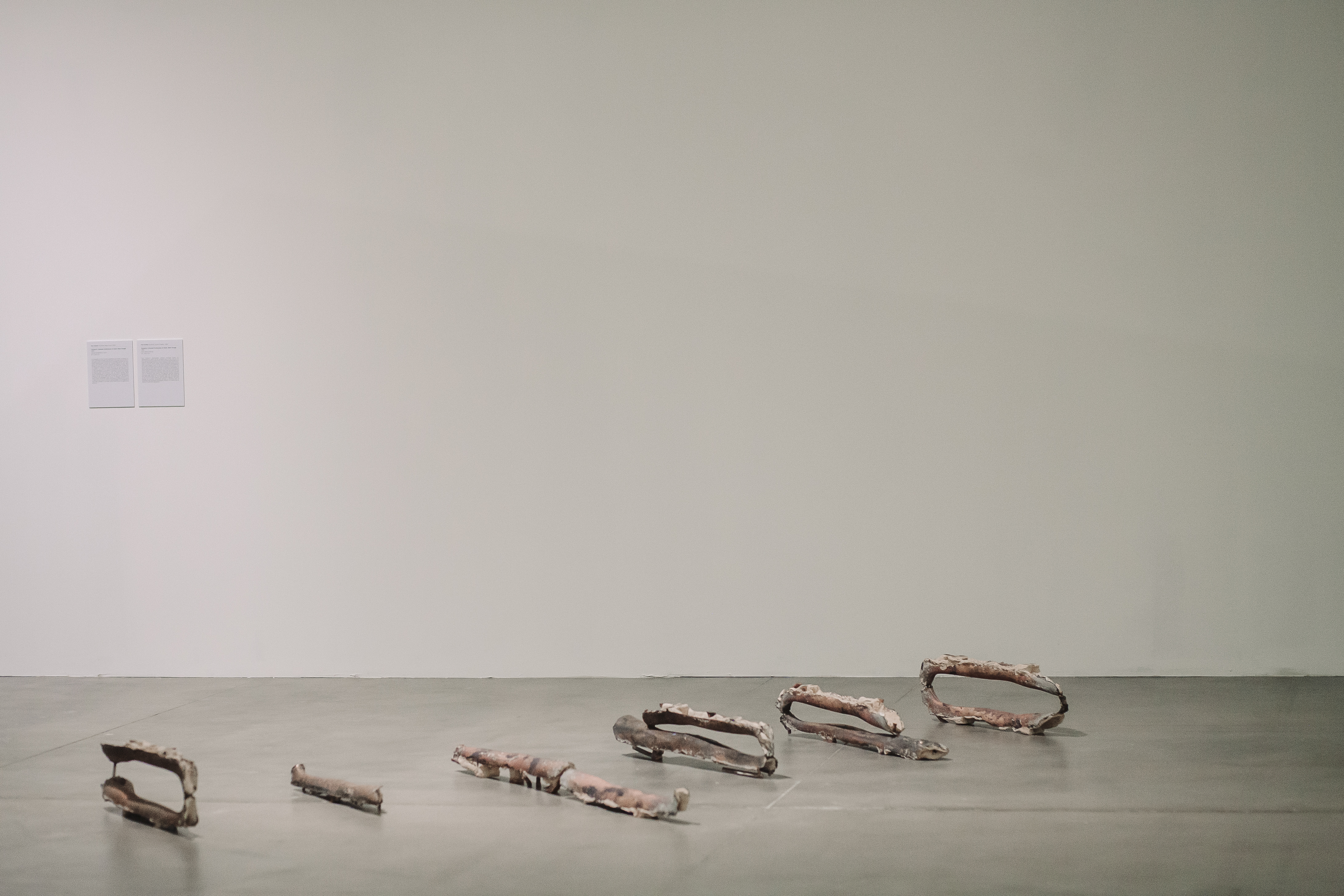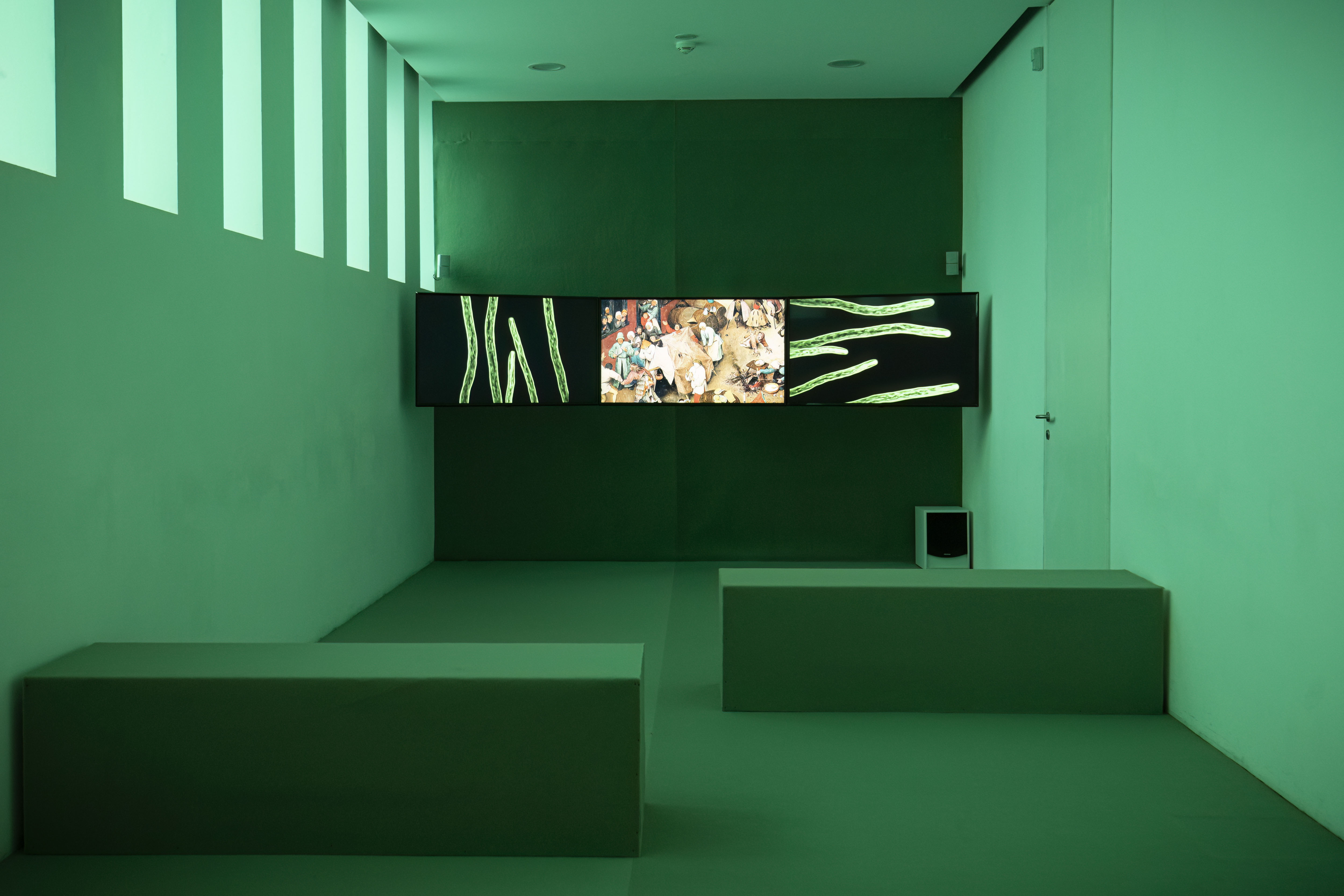Artists: June Crespo, Liz Glynn, Paul Graham, Josh Kline, Goshka Makuga, Yinka Shonibare, Slavs and Tatars, Simon Starling, Kiran Subbaiah, Andra Ursuţa
The exhibition Backwards Ahead presents a selection of works, part of the Sandretto Re Rebaudengo Collection, that relate to the concepts of time, history and evidence. Through the languages of sculpture, installation and photography, the artists in the exhibition question the notion of linear time on which the Western conception of history rests. This view considers what is “ahead” as a sequence of events with no return and what is “backwards” as something that can be reconstructed only through an ongoing search for evidence, historical or judicial traces, that prove the truthfulness of events.
Within Backwards Ahead, artistic perspectives instead embrace a plural temporality composed of anachronisms, cyclicities, and multiple dimensions. In this alternate reality, some works address history in light of the ephemeral status of the document, others produce remakes and forgeries, and still others establish counter-trials.
The title of the exhibition is borrowed from Kiran Subbaiah's work, a closed-circuit installation that engages visitors in a system of deferred control, which reverses the space-time coordinates of those who pass through it. The works of Simon Starling and Slavs and Tatars decline time as an economic-productive cycle and as a course destined to repeat itself in an eternal loop. Liz Glynn, Goshka Macuga, Yinka Shonibare confront material culture, institutional politics and the construction of cultural identity through copying, falsification and re-enactment of the past. Paul Graham, June Crespo, Josh Kline and Andra Ursuţa adopt a forensic register, chase clues and evidence, and finally expose or perform the paradoxical functions of organs of control and discipline.
Through the various perspectives, the works presented in Backwards Ahead trace circular and oblique motions, advance and recede. In this continuous movement, they make the passage of time reversible, notify appeals and judgments and reimagine the power relations between oppressors and oppressed.
